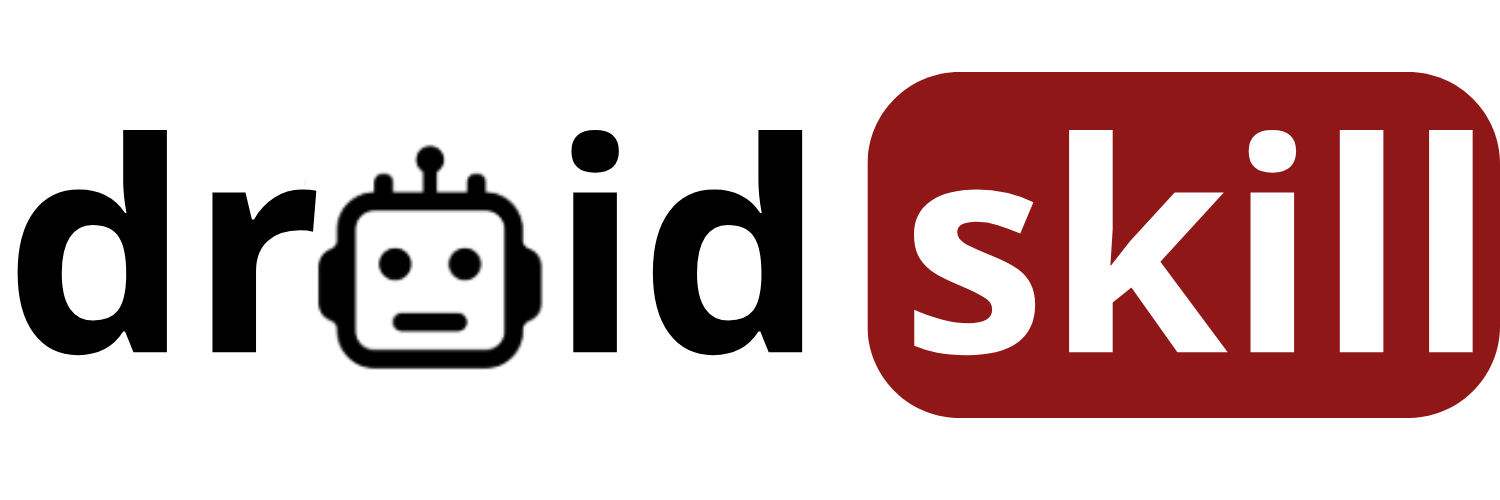Hey Android enthusiasts! Ever felt the frustration of a slow data transfer or a phone that charges at a snail's pace? The culprit might just be your USB cable. In this guide, we'll dive deep into the world of Android USB cables, helping you choose the right one for lightning-fast data transfer and a healthier device. Let's get started!
Understanding USB Cable Types: A Quick Overview
Before we jump into specific recommendations, let's quickly review the different types of USB cables you'll encounter:
- USB Type-A: The classic, rectangular USB connector found on most computers and chargers.
- USB Type-B: A larger, square-ish connector, less common these days but still found on some older devices.
- Mini-USB: A smaller version of Type-B, once popular on digital cameras and older phones.
- Micro-USB: The former standard for Android phones, now largely replaced by USB-C.
- USB Type-C: The modern standard, offering faster data transfer and power delivery. It's also reversible, making it much more convenient to use.
For modern Android devices, you'll primarily be concerned with Micro-USB (for older devices) and USB Type-C. Let's focus on those.
The Importance of Cable Quality
Not all USB cables are created equal. A cheap, poorly made cable can lead to several problems:
- Slow Charging: Inferior cables often have thinner wires, resulting in higher resistance and slower charging speeds.
- Slow Data Transfer: Similar to charging, poor wiring can significantly reduce data transfer speeds.
- Device Damage: Substandard cables can potentially damage your device due to voltage fluctuations or overheating.
- Short Lifespan: Cheap cables are more prone to breaking or fraying, requiring frequent replacements.
Investing in a high-quality USB cable is a small price to pay for the health and performance of your Android device.
Factors to Consider When Choosing a USB Cable
Here's a breakdown of the key factors to consider when selecting a USB cable:
- Connector Type: Ensure the cable has the correct connector for your device (Micro-USB or USB-C).
- USB Standard: Look for cables that support USB 2.0, USB 3.0, or USB 3.1. Higher numbers indicate faster data transfer speeds. USB 3.1 Gen 2 offers the fastest speeds currently available.
- Charging Speed: If fast charging is a priority, look for cables that support Quick Charge (QC) or USB Power Delivery (PD). These technologies allow for much faster charging speeds than standard USB.
- Cable Length: Choose a length that suits your needs. Longer cables can be convenient, but they may also experience slightly slower charging and data transfer speeds.
- Build Quality: Look for cables with durable connectors, reinforced stress points, and braided nylon or TPE sheathing for added protection.
- Brand Reputation: Stick to reputable brands known for producing high-quality cables.
Understanding Charging Standards: Quick Charge vs. USB Power Delivery
Quick Charge (QC): Developed by Qualcomm, Quick Charge is a proprietary charging standard that allows compatible devices to charge much faster than standard USB. Different versions of Quick Charge exist (QC 2.0, QC 3.0, QC 4+), with each iteration offering improved charging speeds and efficiency. To take advantage of Quick Charge, you'll need a device, charger, and cable that all support the same Quick Charge version.
USB Power Delivery (PD): USB Power Delivery is a more universal charging standard that's not tied to a specific manufacturer. It allows for a wider range of devices to be charged at faster speeds, including laptops, tablets, and smartphones. USB PD uses the USB-C connector and can deliver up to 100W of power. Like Quick Charge, you'll need a compatible device, charger, and cable to utilize USB PD.
Choosing the Right Cable for Fast Charging
To achieve the fastest possible charging speeds, follow these guidelines:
- Identify Your Device's Charging Standard: Determine whether your device supports Quick Charge, USB Power Delivery, or both. Check your device's specifications or user manual.
- Use a Compatible Charger: Use a charger that supports the same charging standard as your device.
- Choose a High-Quality Cable: Select a cable that's specifically designed for fast charging and supports the appropriate charging standard. Look for cables that are labeled as Quick Charge compatible or USB Power Delivery compatible.
Data Transfer Speeds: USB 2.0 vs. USB 3.0 vs. USB 3.1
The USB standard determines the maximum data transfer speed of a cable. Here's a quick comparison:
- USB 2.0: Offers a maximum data transfer speed of 480 Mbps (Megabits per second).
- USB 3.0 (also known as USB 3.1 Gen 1): Offers a maximum data transfer speed of 5 Gbps (Gigabits per second), which is about 10 times faster than USB 2.0.
- USB 3.1 Gen 2: Offers a maximum data transfer speed of 10 Gbps, twice as fast as USB 3.0.
If you frequently transfer large files between your Android device and your computer, a USB 3.0 or USB 3.1 cable will significantly reduce transfer times.
Cable Materials and Build Quality
The materials used in a USB cable can significantly impact its durability and performance. Here are some common materials and their characteristics:
- Copper Wires: Copper is the most common material used for the wires inside USB cables. Look for cables with thicker gauge copper wires for better conductivity and faster charging speeds.
- Connectors: The connectors should be made of durable materials like aluminum or gold-plated metal. Reinforced stress points can prevent the connectors from breaking or bending.
- Sheathing: The outer sheathing of the cable protects the wires from damage. Common materials include PVC, TPE (Thermoplastic Elastomer), and braided nylon. Braided nylon is the most durable option, offering excellent resistance to abrasion and tangling.
Safety Considerations
Using a low-quality or damaged USB cable can pose safety risks. Here are some precautions to take:
- Inspect Cables Regularly: Check your USB cables for any signs of damage, such as fraying, exposed wires, or bent connectors.
- Avoid Using Damaged Cables: Do not use a cable that is damaged, as it could potentially cause a short circuit or damage your device.
- Use Certified Cables: Look for cables that are certified by reputable organizations like UL or CE. These certifications indicate that the cable has been tested for safety and performance.
- Don't Overcharge Your Device: Avoid leaving your device plugged in for extended periods after it's fully charged.
Top Android USB Cable Recommendations
Now that you know what to look for, let's explore some top USB cable recommendations for your Android device. These recommendations are based on a combination of factors, including performance, durability, and value.
1. Anker Powerline+ III USB-C to USB-A Cable
Anker is a well-known brand for producing high-quality charging accessories, and the Powerline+ III is no exception. This cable features a durable braided nylon exterior, reinforced stress points, and supports fast charging. It's a great all-around option for everyday use.
The Anker Powerline+ III USB-C to USB-A Cable is a durable and reliable cable designed for fast charging and data transfer. It features a braided nylon exterior for added strength and reinforced stress points to prevent breakage. This cable is compatible with a wide range of devices and supports Quick Charge technology for faster charging speeds.
Link to Playstore AppPlaystore Search
2. Belkin USB-C to USB-C Cable (USB 3.1 Gen 2)
If you need the fastest possible data transfer speeds, the Belkin USB-C to USB-C Cable is an excellent choice. It supports USB 3.1 Gen 2, offering speeds of up to 10 Gbps. It's also USB Power Delivery compatible, allowing for fast charging of compatible devices.
The Belkin USB-C to USB-C Cable is a high-performance cable designed for fast data transfer and charging. It supports USB 3.1 Gen 2, offering speeds of up to 10 Gbps, and is also USB Power Delivery compatible for fast charging. This cable is ideal for users who need to transfer large files quickly or charge their devices rapidly.
Playstore Search
3. AmazonBasics USB Type-C to USB Type-C 2.0 Cable
For a budget-friendly option, the AmazonBasics USB Type-C to USB Type-C 2.0 Cable is a solid choice. It's a reliable cable for everyday charging and data transfer, and it's available in various lengths to suit your needs. While it doesn't offer the fastest data transfer speeds, it's a great value for the price.
The AmazonBasics USB Type-C to USB Type-C 2.0 Cable is a reliable and affordable option for everyday charging and data transfer. It's compatible with a wide range of devices and is available in various lengths to suit your needs. While it doesn't offer the fastest data transfer speeds, it's a great value for the price.
Playstore Search
4. Aukey USB-C to USB-A Cable with Power Delivery
The Aukey USB-C to USB-A Cable with Power Delivery is a versatile cable that supports both fast charging and data transfer. It's compatible with USB Power Delivery, allowing for fast charging of compatible devices, and it features a durable braided nylon exterior for added protection.
The Aukey USB-C to USB-A Cable with Power Delivery is a versatile cable that supports both fast charging and data transfer. It's compatible with USB Power Delivery, allowing for fast charging of compatible devices, and it features a durable braided nylon exterior for added protection. This cable is a great option for users who need a reliable cable for both charging and data transfer.
Playstore Search
5. Native Union Belt Cable USB-C to USB-A
The Native Union Belt Cable is known for its stylish design and durable construction. It features a braided nylon exterior and a genuine leather belt that keeps the cable neatly organized. It also supports fast charging and data transfer, making it a great combination of style and functionality.
The Native Union Belt Cable is a stylish and durable cable that combines form and function. It features a braided nylon exterior and a genuine leather belt that keeps the cable neatly organized. This cable also supports fast charging and data transfer, making it a great option for users who want a cable that looks as good as it performs.
Playstore SearchMaintaining Your USB Cables
To extend the lifespan of your USB cables, follow these tips:
- Avoid Bending or Twisting: Avoid bending or twisting the cable excessively, as this can damage the internal wires.
- Unplug Carefully: When unplugging the cable, grip the connector instead of pulling on the cable itself.
- Store Properly: Store your cables in a cool, dry place, away from direct sunlight and extreme temperatures.
- Use Cable Organizers: Use cable organizers or ties to keep your cables neatly organized and prevent tangling.
Troubleshooting Common USB Cable Issues
If you're experiencing problems with your USB cable, here are some troubleshooting tips:
- Check the Connections: Make sure the cable is securely plugged into both your device and the charger or computer.
- Try a Different Port: Try using a different USB port on your computer or charger.
- Restart Your Device: Sometimes, simply restarting your device can resolve connectivity issues.
- Update Drivers: Make sure your computer has the latest USB drivers installed.
- Test with Another Cable: If possible, test your device with another USB cable to see if the problem is with the cable itself.
The Future of USB Cables
The USB standard continues to evolve, with new versions offering faster data transfer speeds and improved power delivery capabilities. USB4 is the latest standard, promising even faster speeds and greater versatility. As new devices and technologies emerge, USB cables will continue to play a crucial role in connecting and powering our devices.
Conclusion
Choosing the right USB cable for your Android device is essential for fast charging, efficient data transfer, and the overall health of your device. By understanding the different types of cables, charging standards, and build quality factors, you can make an informed decision and select a cable that meets your specific needs. Remember to invest in high-quality cables from reputable brands and take proper care of your cables to ensure their longevity. Happy charging and data transferring!



